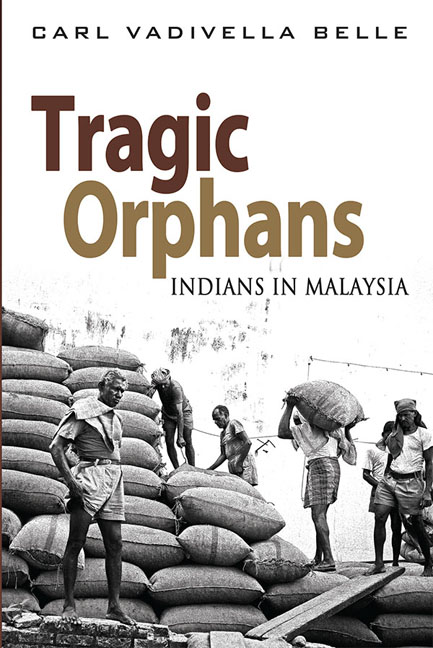Book contents
- Frontmatter
- Contents
- Acknowledgements
- List of Abbreviations
- Introduction
- 1 The Malay Peninsula: Early History, Melaka and the Colonial Setting
- 2 European Colonialism and the Malay Peninsula
- 3 India and the Development of British Ideologies of Empire
- 4 British Governance of Malaya
- 5 Slavery and Indentured Labour
- 6 Indian Indentured Labour in Malaya
- 7 Kangany Labour in Malaya
- 8 Other Indian Immigration
- 9 Indian Political Development to 1941
- 10 The Japanese Invasion, Subhas Chandra Bose and Indian Wartime Nationalism
- 11 The Post–war Period: Reform and Repression: 1945–48
- 12 From Federation to Merdeka
- 13 From Malaya to Malaysia: Singapore, 13 May and the New Economic Policy
- 14 The Mahathir Years: A Changing Malaysian Landscape
- 15 Abdullah Badawi, Islamization, and the Rise of Hindraf
- 16 Najib and 1Malaysia: A New Deal?
- Conclusions
- Bibliography
- Index
- Frontmatter
- Contents
- Acknowledgements
- List of Abbreviations
- Introduction
- 1 The Malay Peninsula: Early History, Melaka and the Colonial Setting
- 2 European Colonialism and the Malay Peninsula
- 3 India and the Development of British Ideologies of Empire
- 4 British Governance of Malaya
- 5 Slavery and Indentured Labour
- 6 Indian Indentured Labour in Malaya
- 7 Kangany Labour in Malaya
- 8 Other Indian Immigration
- 9 Indian Political Development to 1941
- 10 The Japanese Invasion, Subhas Chandra Bose and Indian Wartime Nationalism
- 11 The Post–war Period: Reform and Repression: 1945–48
- 12 From Federation to Merdeka
- 13 From Malaya to Malaysia: Singapore, 13 May and the New Economic Policy
- 14 The Mahathir Years: A Changing Malaysian Landscape
- 15 Abdullah Badawi, Islamization, and the Rise of Hindraf
- 16 Najib and 1Malaysia: A New Deal?
- Conclusions
- Bibliography
- Index
Summary
Some years ago, while undertaking research in the Oriental and Indian Office Collection Library in London, I uncovered a truly shocking passage contained within the 1957 Federation of Malaya Census Report. Noting that 4 million Indians had been recruited to work in colonial Malaya and that 2.8 million had subsequently returned to India, the report commented: “Much of the 1.2 million net immigration appears to have been wiped out by disease, snakebite, exhaustion and malnutrition, for the Indian population of Malaya numbered only 858,614 of which 62.1 per cent was locally born.” The bland matter of fact language cannot begin to disguise the tragedy and horror which lurks behind these raw statistics. Nor does this brief summation of the premature deaths of hundreds of thousands of Indians begin to evaluate the appalling human toll that was exacted in the development of a prosperous colonial economy that enriched many investors and contributed significantly to the wealth of Great Britain. There is no official monument to the nameless Indians who laid the economic and infrastructural foundation upon which the emerging modern Malaysian economy was constructed, but working class Indians will inform you that their legacy is to be found in the railway sleepers and rubber trees of Malaysia; each representing the sacrifice of an Indian life.
Although at that point my energies were directed towards the completion of a doctoral dissertation on the Hindu festival of Thaipusam in Malaysia, my research continued to generate a considerable volume of historical material which I felt cast fresh light on the Indian experience in Malaya/Malaysia. During the fieldwork for my doctorate, I interviewed members of a vanishing generation of Indian Malaysians; people who had been recruited under the kangany system; who had personal experience of the Klang strikes of 1941; who had participated in the wartime politics of Indian nationalism; who had been active in the early years of the Malayan Indian Congress; and who had known the leading figures who had helped shape contemporary Indian society in Malaysia.
- Type
- Chapter
- Information
- Tragic OrphansIndians in Malaysia, pp. xiv - xxPublisher: ISEAS–Yusof Ishak InstitutePrint publication year: 2014

